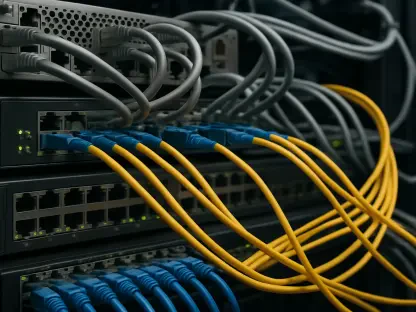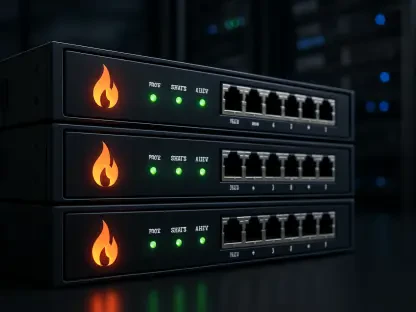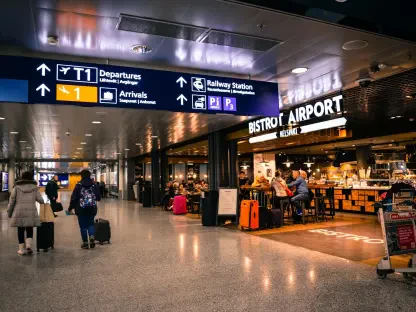In an era where digital demands are skyrocketing, the completion of a massive 622-mile fiber corridor by a Denver-based infrastructure provider marks a significant milestone in addressing connectivity challenges across the western United States. This ambitious project, known as the Umatilla-Prineville-Reno (UPR) corridor, stretches through Oregon, California, and Nevada, targeting underserved regions with a desperate need for enhanced bandwidth. As data centers, artificial intelligence (AI), and cloud computing continue to drive technological innovation, the strain on existing networks has become increasingly evident. This new fiber route offers a vital solution by providing a low-latency, non-congested pathway that supports the burgeoning needs of hyperscale data centers and rural communities alike. By delving into the specifics of this infrastructure achievement, it becomes clear how such advancements are reshaping the digital landscape and paving the way for future growth.
Addressing Bandwidth Bottlenecks with Strategic Infrastructure
The UPR corridor stands as a proactive response to the mounting pressure on traditional fiber routes, particularly the heavily congested 290-mile I-5 corridor along Interstate 5 in California and Washington. Spanning 622 miles, this inland pathway is engineered to bypass bottlenecks, ensuring smoother data transmission for critical applications. Built with cutting-edge SMF-29 fiber, multiple conduits, and 13 signal-boosting in-line amplifiers (ILAs), the project reflects a forward-thinking approach to infrastructure. This design not only enhances capacity but also guarantees reliability for data centers that rely on seamless connectivity to function effectively. Industry experts have noted that without such robust pathways, data centers risk becoming isolated, unable to meet the demands of modern workloads. The strategic positioning of this route through less-served areas further underscores its role in balancing technological progress with regional equity, ensuring that even remote locations can tap into high-speed networks essential for economic and social development.
Moreover, the financial backing for this initiative highlights a growing trend of collaboration between public and private sectors to tackle connectivity gaps. A substantial $92.9 million grant from the NTIA Middle Mile Grant Program has supported the development of this corridor, alongside the provider’s broader efforts to enhance infrastructure across eight states, covering over 2,100 route miles. This partnership model demonstrates how targeted funding can accelerate projects that might otherwise lag due to resource constraints. Analysts have pointed out that government support often falls short of demand, making private investment a critical component in scaling fiber networks. By integrating advanced technology with strategic funding, the UPR corridor serves as a blueprint for future endeavors aimed at mitigating bandwidth shortages. Its completion marks a pivotal step in ensuring that digital ecosystems can sustain the rapid adoption of AI and cloud services without succumbing to the limitations of outdated or overtaxed infrastructure.
Supporting Data Center Growth and Emerging Technologies
As hyperscale data centers continue to proliferate, with capacity expected to triple by 2029 according to recent industry reports, the need for expanded fiber networks has never been more urgent. The UPR corridor directly addresses this demand by providing a backbone for data centers expanding into remote areas due to power and space constraints in urban hubs. These facilities, increasingly vital for AI performance and scalability, require fast, secure, and low-latency connections to primary internet exchange points. Without new fiber routes, the risk of data transmission delays could hinder technological advancements and compromise security. The corridor’s design prioritizes these needs, ensuring that even distant data centers remain integrated into the broader digital framework. This is particularly crucial as AI workloads demand unprecedented levels of data processing, pushing infrastructure providers to innovate continuously to keep pace with evolving requirements.
Beyond technical specifications, the broader implications of this fiber expansion reveal a shift in how infrastructure supports industry trends. Reports from the Fiber Broadband Association indicate that over twice the current amount of fiber will be necessary to meet future AI-driven needs. This forecast emphasizes the urgency of projects like the UPR corridor, which not only bolster connectivity for data centers but also lay the groundwork for emerging technologies. The route’s ability to serve as a low-latency alternative means that businesses relying on real-time data processing can operate more efficiently, fostering innovation across sectors. Additionally, the push into underserved regions aligns with a socio-economic mission to bridge the digital divide, ensuring that rural communities gain access to the same high-speed networks as urban centers. This dual focus on supporting cutting-edge tech and addressing regional disparities highlights the multifaceted impact of strategic fiber investments in shaping a more connected future.
Expanding Reach to Underserved Communities and Future Horizons
One of the standout aspects of the UPR corridor is its commitment to enhancing connectivity in unserved and underserved areas across the western US. By prioritizing regions often overlooked in favor of urban hubs, this project tackles the digital divide head-on, offering faster broadband to communities in Oregon, California, and Nevada. The selection of these locations considers not only technical feasibility but also socio-economic factors, reflecting a nuanced approach to infrastructure development. Improved connectivity in these areas can drive economic growth, enable remote education, and facilitate access to telemedicine, thereby transforming lives in tangible ways. This focus on equity ensures that the benefits of technological progress are distributed more evenly, preventing rural areas from being left behind as digital demands escalate. The corridor’s impact thus extends beyond mere data transmission, fostering a more inclusive digital landscape.
Looking ahead, the completion of this 622-mile route is just the beginning of a larger vision to address connectivity challenges on a national scale. Plans to construct an additional 5,000 long-haul route miles by 2030, including connections from Texas to Atlanta, signal a long-term commitment to overcoming bandwidth constraints. These efforts are essential as data center hubs continue to expand into new territories, driven by power limitations in traditional locations. The success of the UPR corridor, supported by a blend of private investment and public grants, sets a precedent for future projects aimed at sustaining the digital backbone of the US. Industry stakeholders agree that without such proactive measures, the scalability of modern computing ecosystems could falter. As a result, this initiative not only addresses immediate connectivity needs but also paves the way for innovative solutions, ensuring that infrastructure keeps pace with the relentless march of technology.









